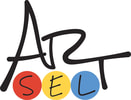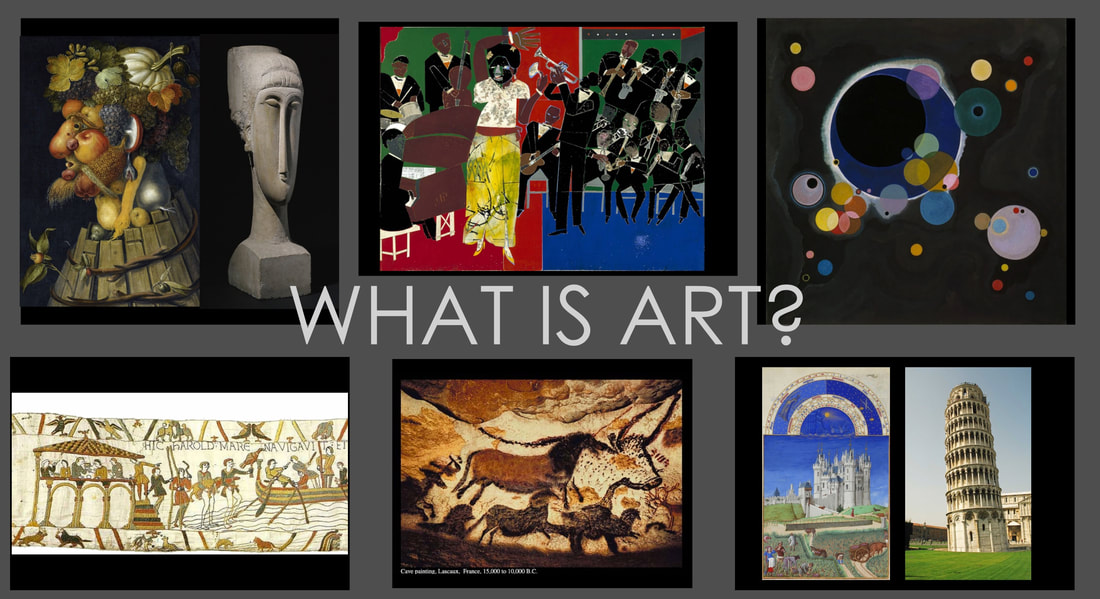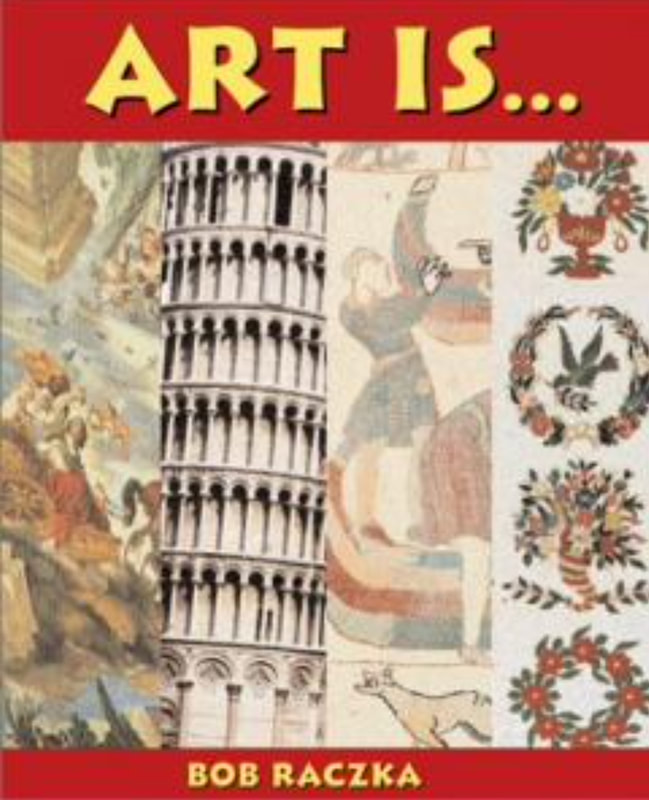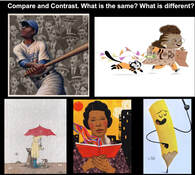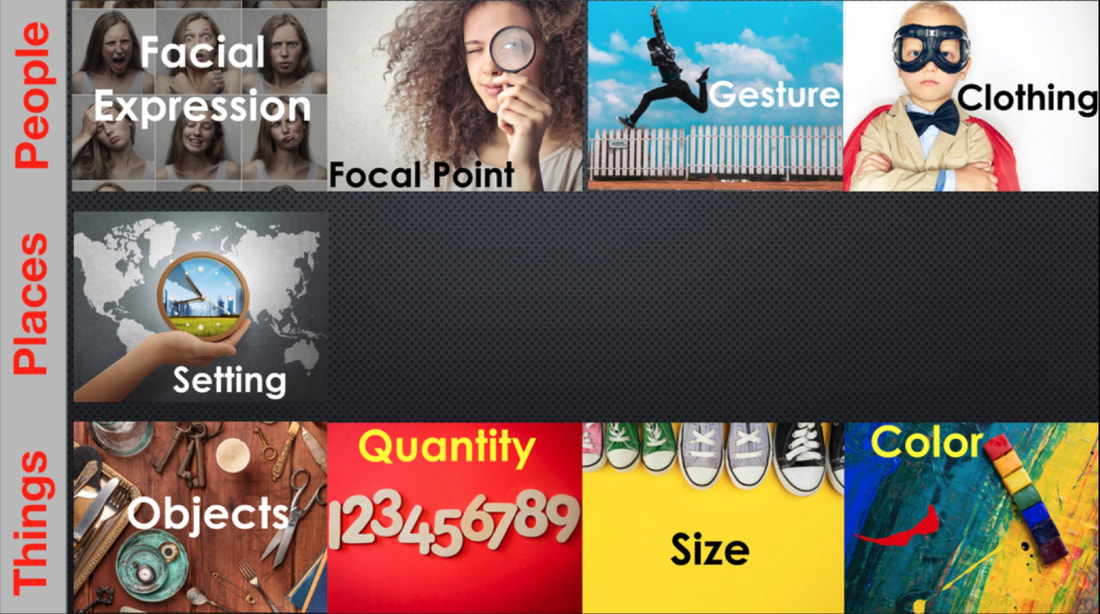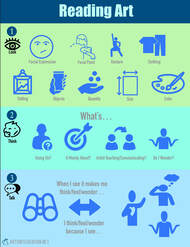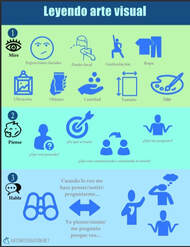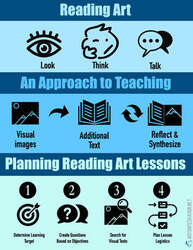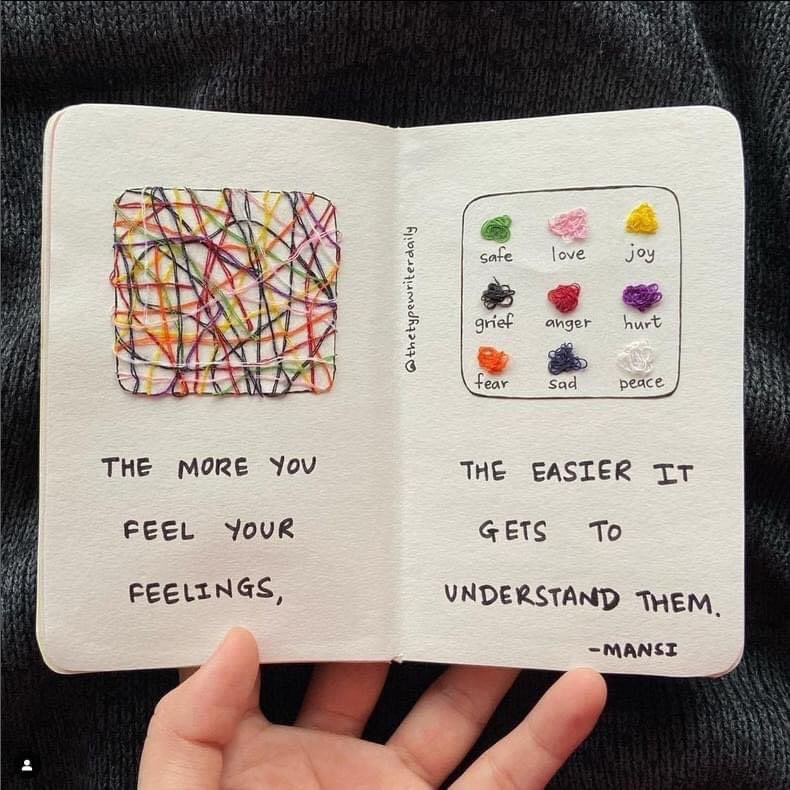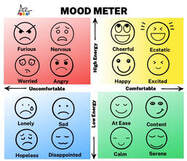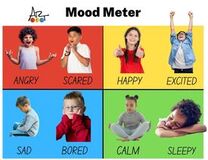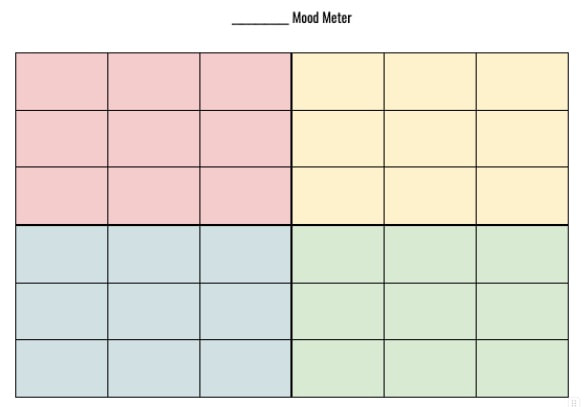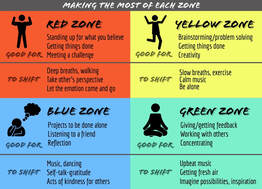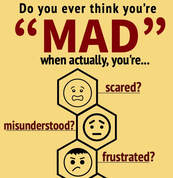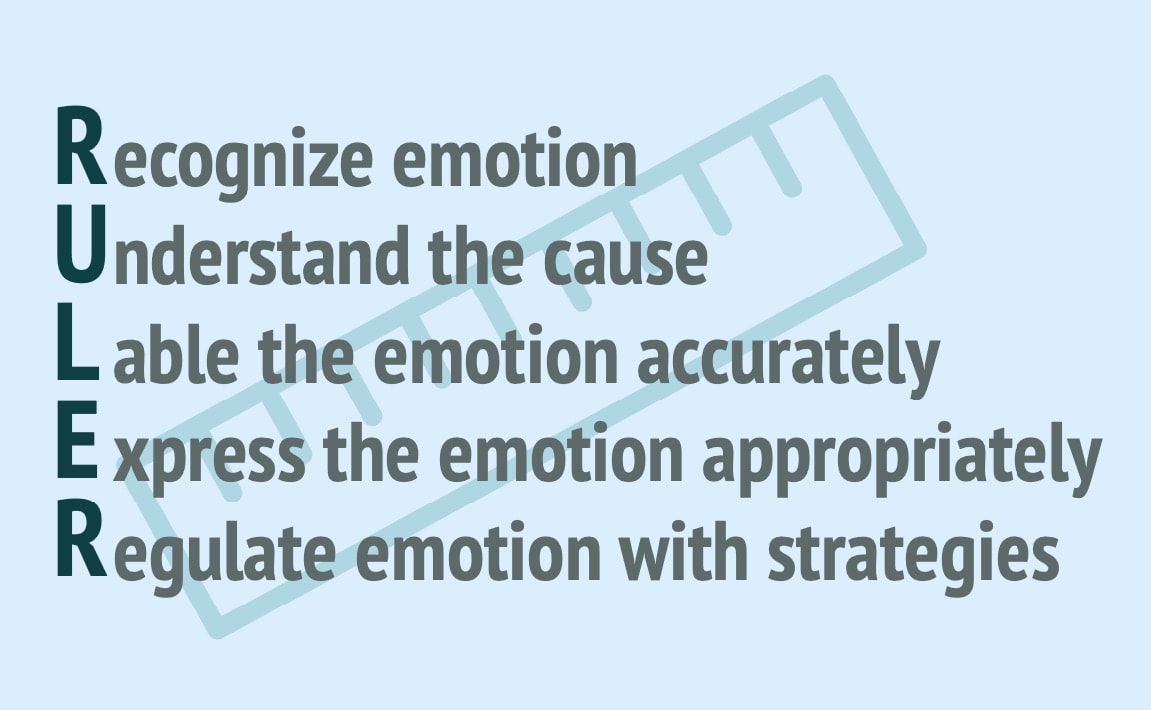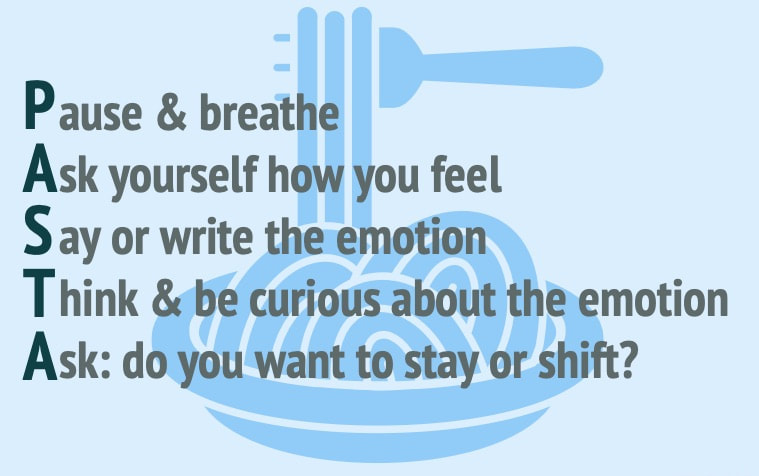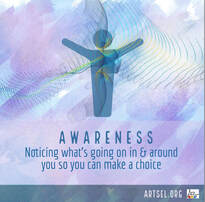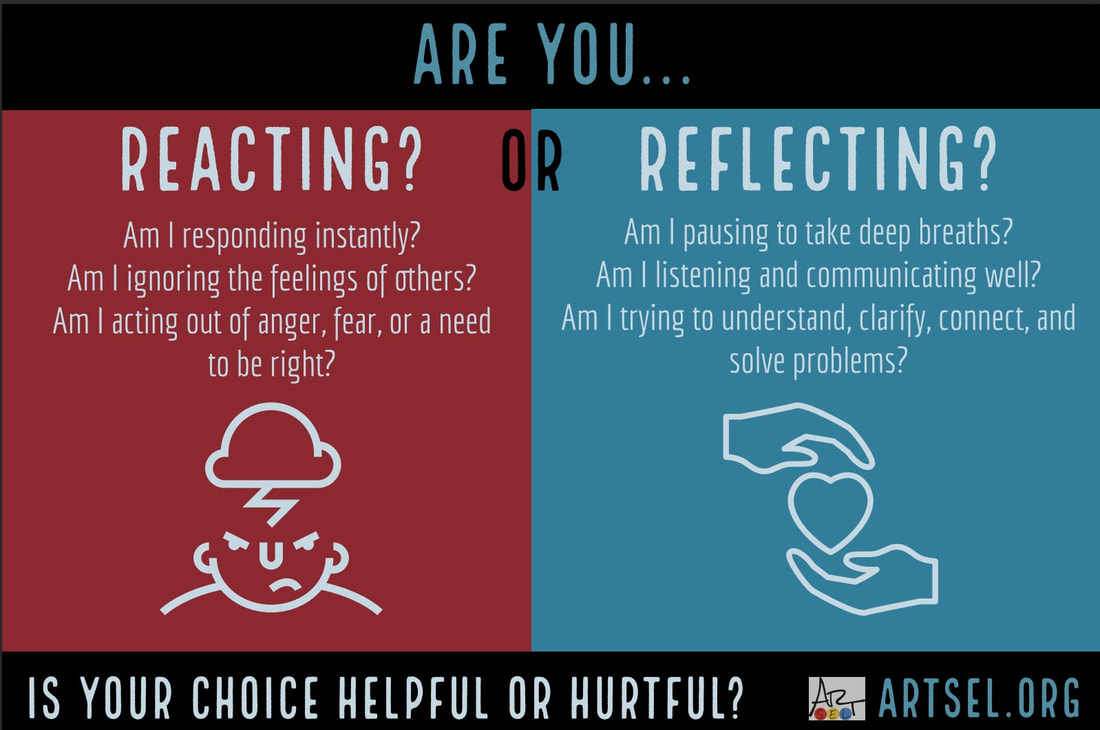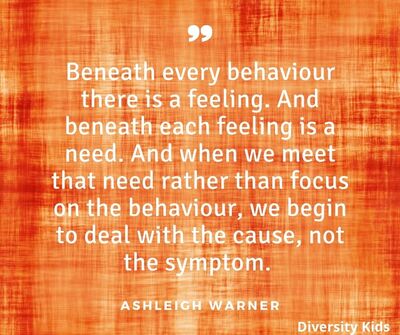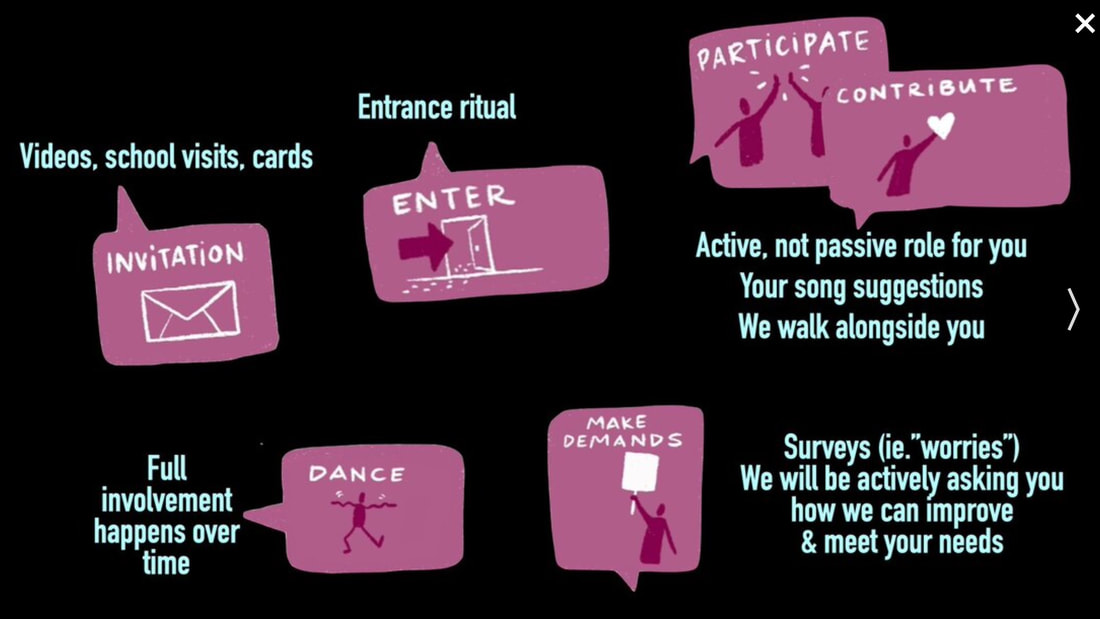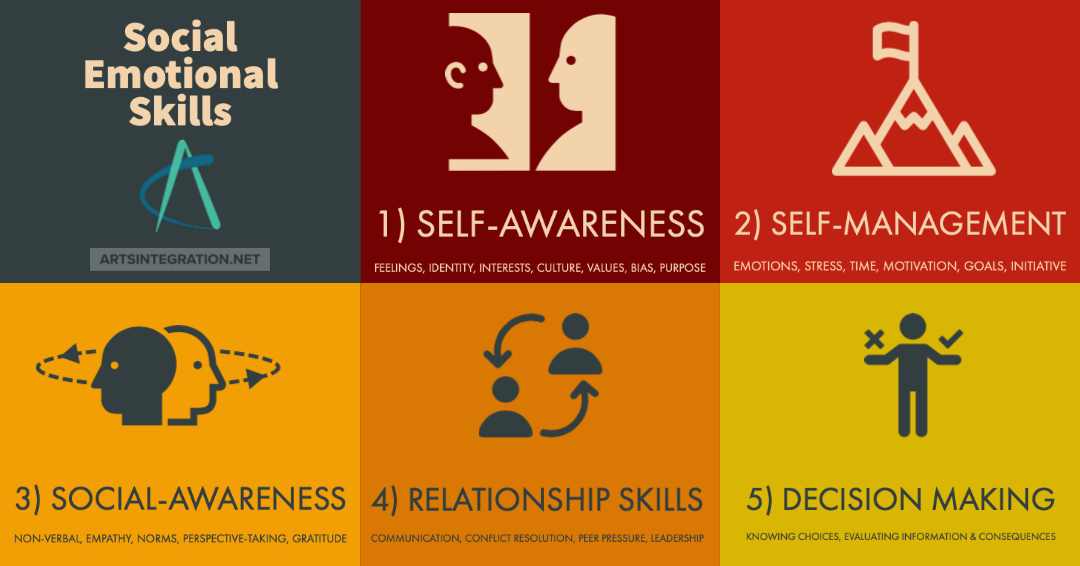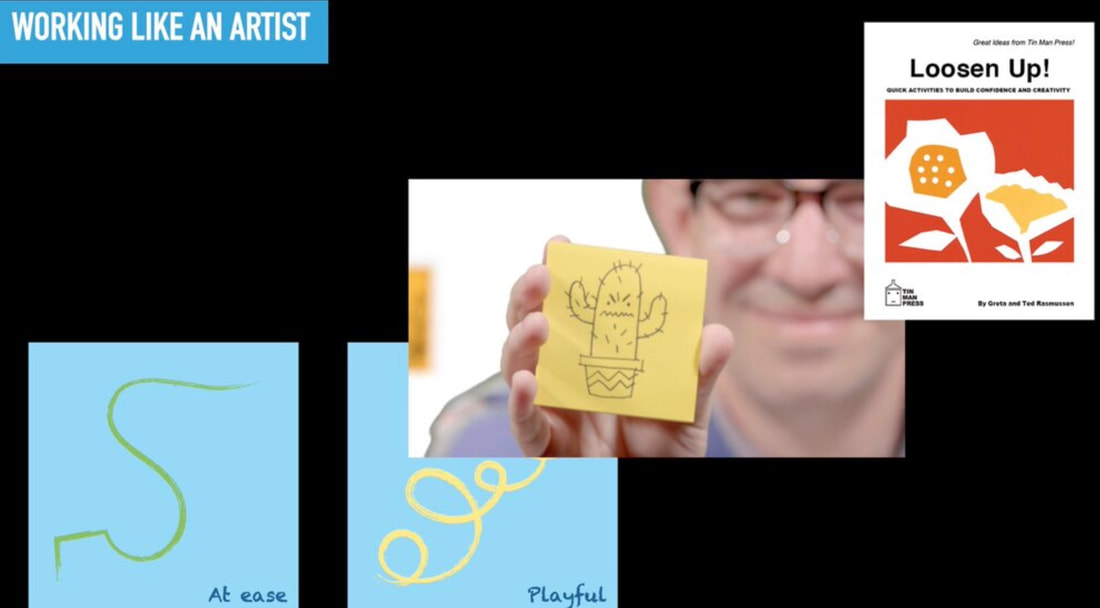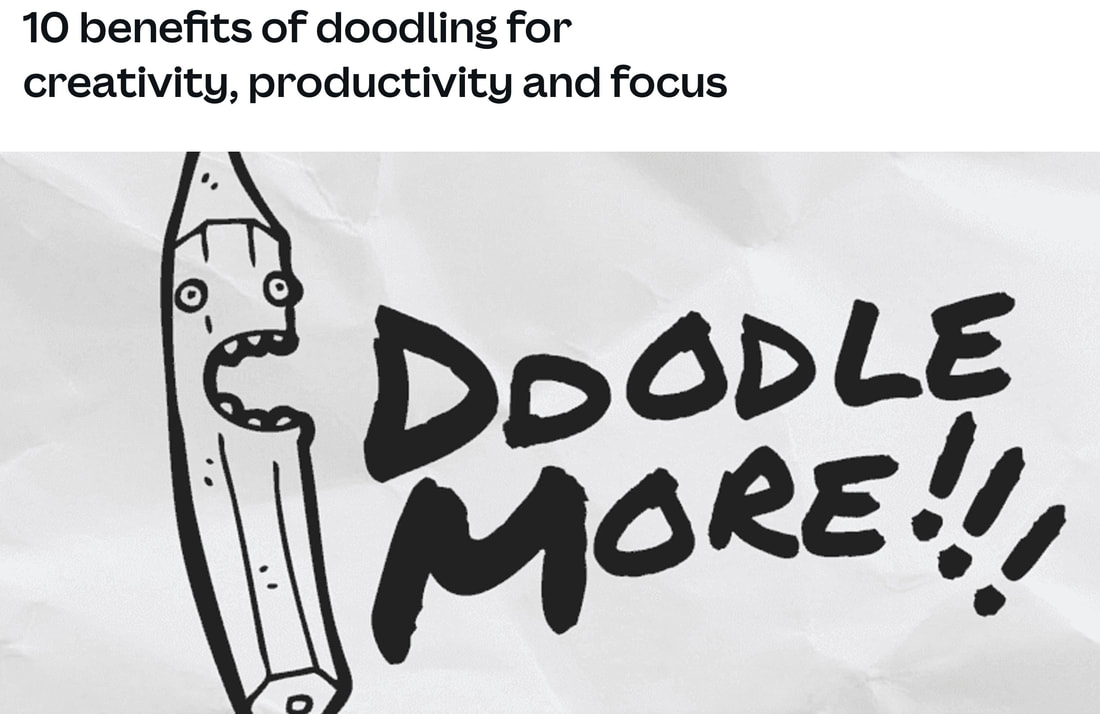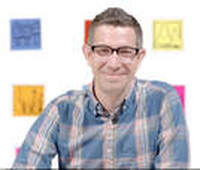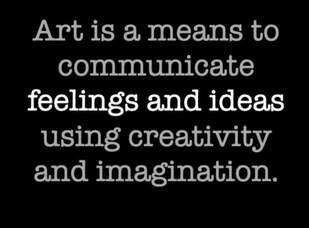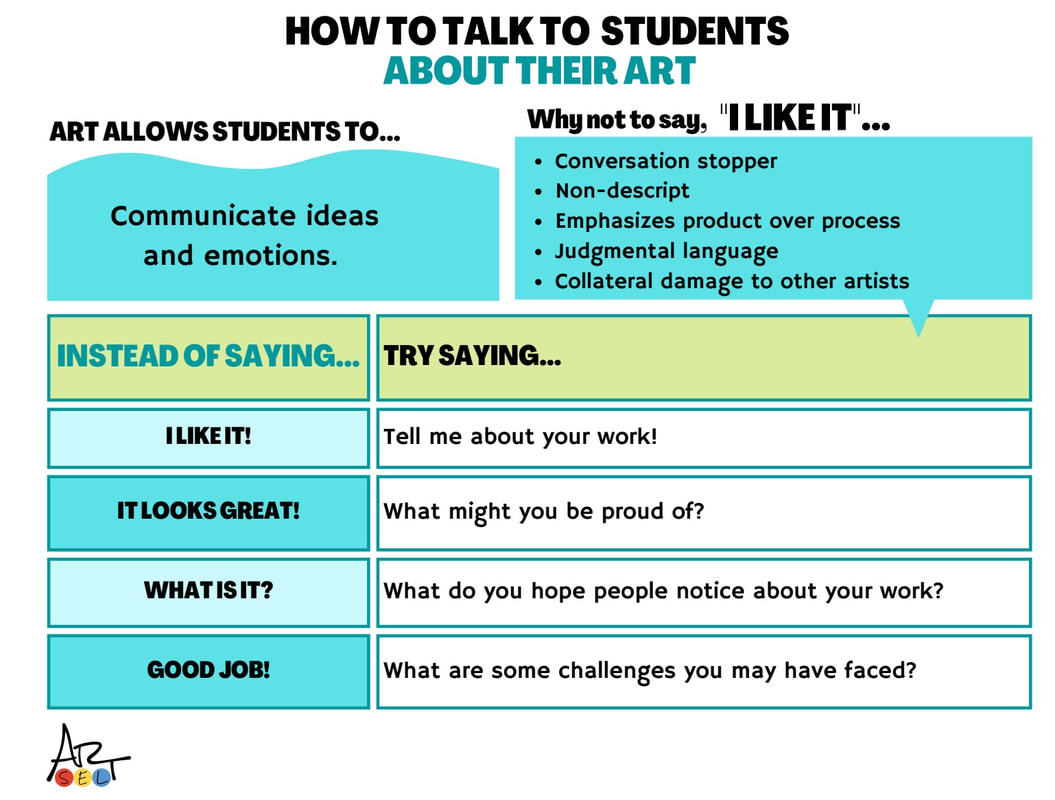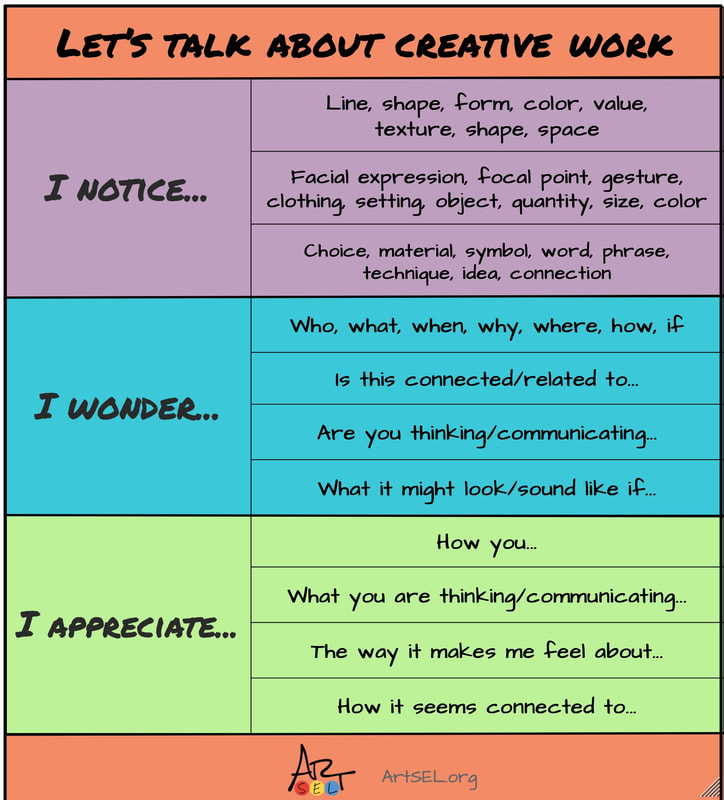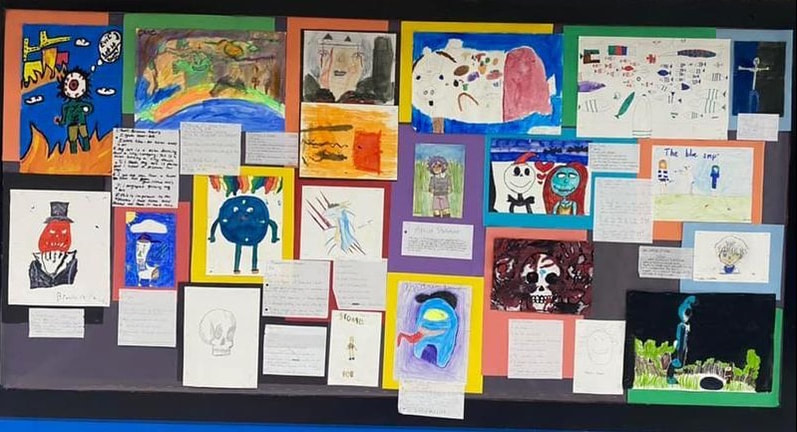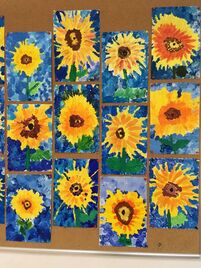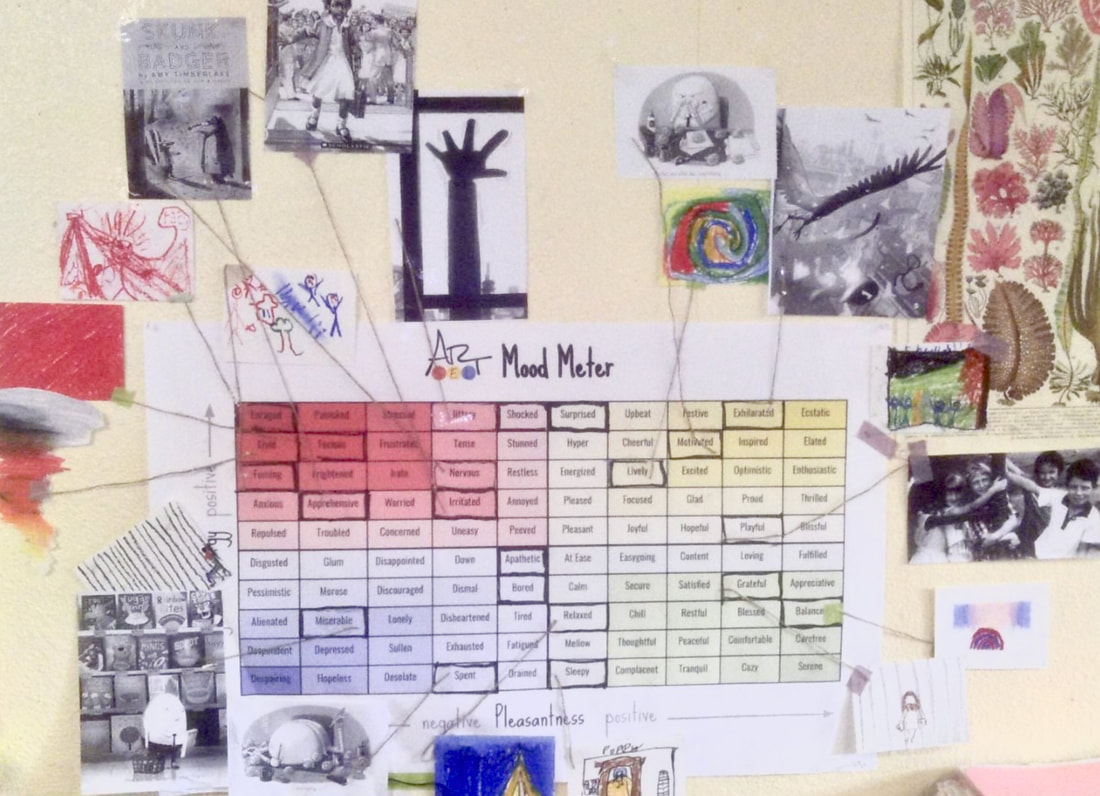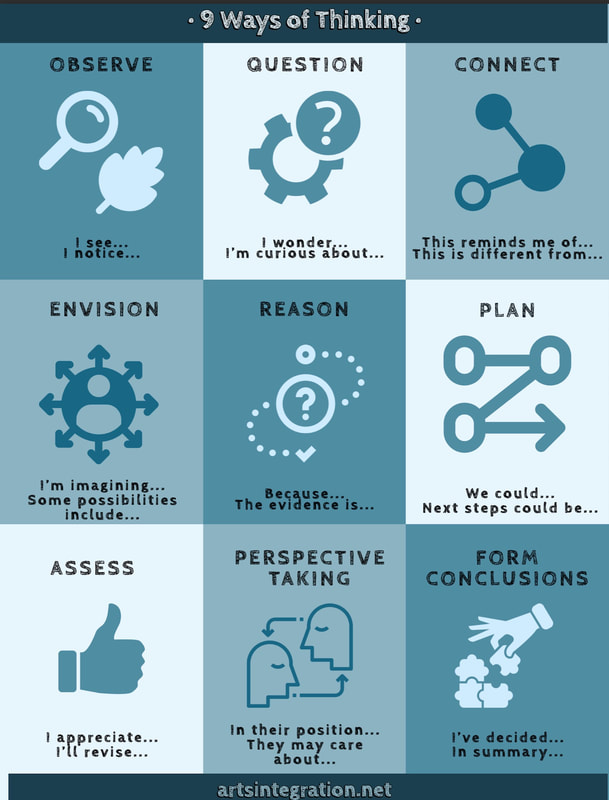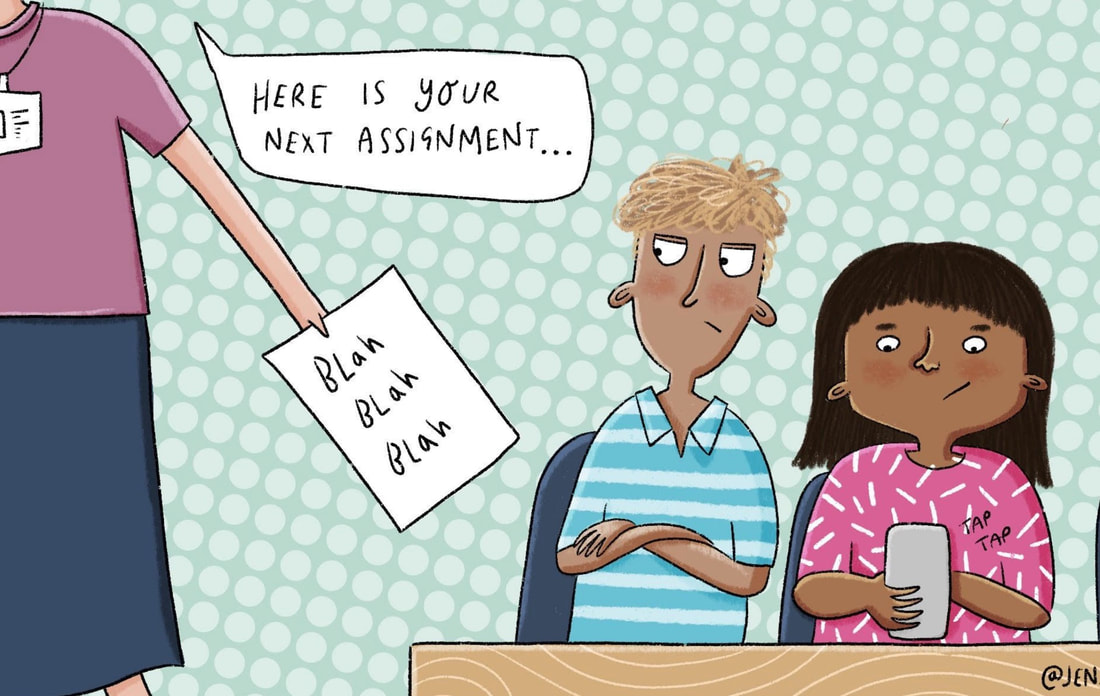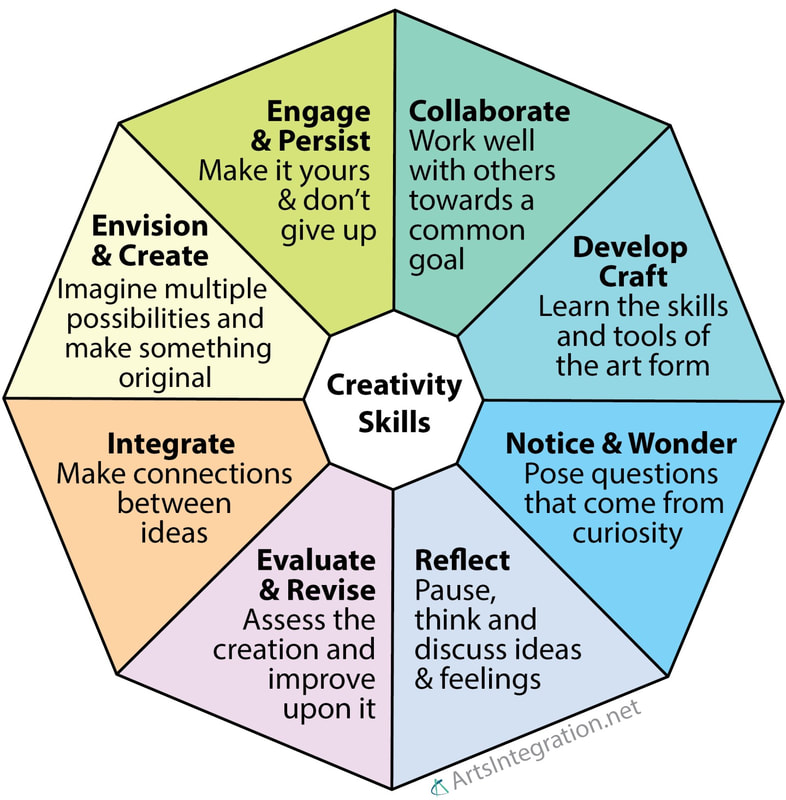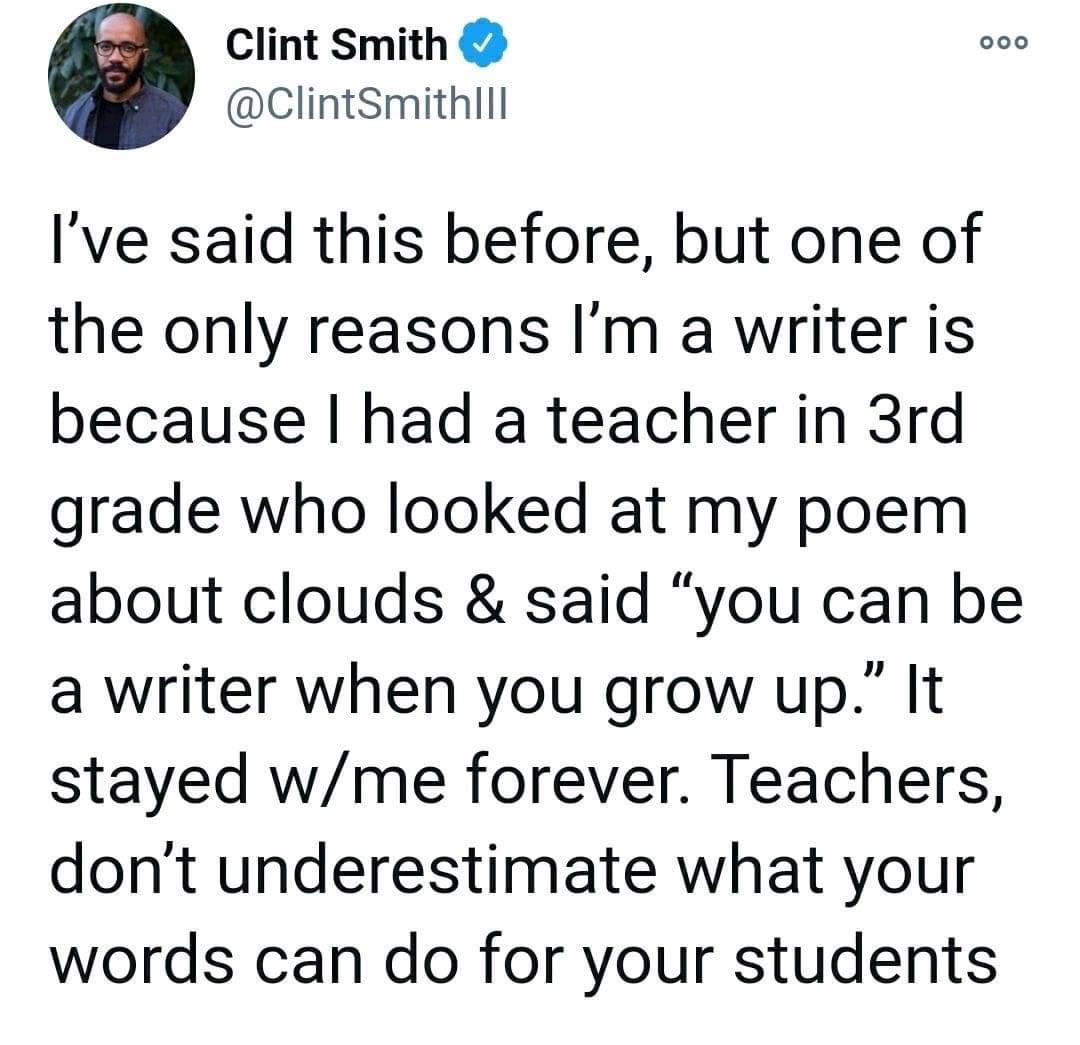ArtSEL Resources Organizer
Reading Art
what is art? Where do we see art?
|
This lesson is ideal for establishing "What is art?" and "Where do we see art?" It features the book "Art is..." by Bob Raczka.
|
Reading art concepts
|
This lesson introduces children to the 9 things we look for when reading art.
Other resources are here. |
This Edutopia video shows the foundational concepts of "art as text"
READING ART LESSONS for specific books and concepts
These are Reading Art lessons for various books.
- All Summer in a Day
- A Life of Color
- Anh's Anger
- Bear Came Along
- Big Al (with tableau instructions)
- Branches of Government (Social Studies)
- Deforestation (science)
- Drawn Together
- Drum Dream Girl
- Energy (Science)
- Feathers and Fools
- Harriet Tubman (images only)
- If You Plant a Seed
- Internal and External Conflicts--Out of the Dust
- Mixed
- Mr. Tiger Goes Wild
- Niko Draws A Feeling
- Oil
- Spanish Missions (images only)
- Stick & Stone
- The Big Umbrella (images only)
- They All Saw A Cat
- Those Shoes
- Trombone Shorty
- We Are Water Protectors
- We're All in the Same Boat!
- When Pencil Met Eraser
scripted lessons with linked images
Music videos
Facial Expression & Focal Point Gesture & Clothing Setting Objects, Quantity, Size & Color The Reading Art Process
Image Bank
|
Over 140 image slide shows are available here to practice reading art.
The Notice/Wonder , Reading Art, or VTS approaches are suggested. |
Acting Right
toolbox music link
Click to play this music when doing the Actor's Toolbox routine. Do not substitute other music for this routine.
Acting right training & support
ArtSEL teachers can use these resources to learn the Acting Right concepts:
- In person training
- Online module
- Acting Right book by Sean Layne
- Facilitator key cards
- In-person modeling of Acting Right in schools by ArtSEL teaching artists, staff, and Focus 5 personnel
Students as problem solvers infographic
|
It's critical that students learn to teach themselves the behaviors that will help them succeed. This infographic shows the cycle teachers can use for many behavior issues. Notice each problem shows the need for one of the 5 Acting Right skills. (body, voice, imagination, concentration, cooperation)
Example 1: "I notice we didn't get into groups. What happened? (Students: "We didn't communicate with each other!") Why didn't you use your voice? What will you do next time? Let's see what happens." Example 2: "I notice some students were arguing. What happened? (Students: "We both wanted to use the __ at the same time!") Why didn't you use your cooperation skills? Was that helpful or hurtful? What will you do next time? Let's see what happens." Example 3: "I notice some didn't follow the directions. What happened? (Students: "We didn't know what to do.") Were you using your concentration skills? Did you get distracted? What will be a strong choice next time? Let's see what happens." |
The goal of this cycle is having students solve their own problems rather than the adult.
|
Social-Emotional Learning
emotional identification
|
Most people have a limited ability to precisely identify and name their emotions. This often leads to a generalized identification in which dozens of emotions are identified only as "mad" or "sad" or "happy". ArtSEL aims to help adults and children accurately identify their emotions through the use of mood meters, discussion, and other activities such as the theater activity, "The Statue Game". When people better understand their emotions, they may better understand their needs and be better able to communicate with others.
Here are some mood meters for different ages and purposes. Grade levels are suggested, but use what seems right for your students. |
|
100 word mood meter
(grades 3+) |
8-word mood meter
(TK-K) |
Blank mood meter
|
Additional posters to support emotional identification and understanding the four zones.
|
All 4 zones can be useful and there are strategies for moving out of each zone. Lesson link
|
Sometimes we think we're "mad" but really other emotions are going on
|
RULER is an acronym to help process our emotions
(grade 4+ suggested) |
PASTA is similar to RULER with simpler words for younger students
|
Other social-emotional concepts
|
"Awareness-Noticing what's going on in and around you
so you can make a choice" This is a powerful definition as it emphasizes the importance of noticing (mindfulness) both our internal emotions and needs as well as our awareness of what's happening around us. Equally empowering is the idea that our behaviors can be a choice; they don't have to be involuntary reactions.
|
design for belonging
what is casel 5?
|
The Collaborative for Academic, Social and Emotional Learning (CASEL) has identified 5 competencies or skills that we can strengthen over our lifetime. We never "grow out" of these skills and can always get better at them. By identifying each by name, we can gain awareness of our areas of growth and strength. Refer to this poster during times that students or the class struggles or to celebrate times of accomplishment.
|
Visual Art Lessons
Start with Doodles
|
People often have art anxiety, perfectionism, and believe they can't do art. The worst thing for these people is to do very few art projects during the year that each take a significant amount of time.
This page gives more information on using doodling as a low-risk approach to art making. Doodles also reveal how the choice of color, line and shape can communicate emotions and ideas. The book Loosen Up! (provided to ArtSEL teachers) supports flexible thinking, working like an artist, and problem solving. Aim for five doodles per day with students to increase confidence, reduce anxiety, and reinforce the concept that we use drawing as a means to communicate just as we do language. |
drawing with mr. J
|
Jon Juravich, AKA "Mr. J" is an award-winning art teacher in Ohio who has created series of videos for children integrating art and social-emotional learning. Each episode has a drawing lesson (about 2 minutes) and a discussion of a related social-emotional skill.
A great next step after watching an episode is having students create a new doodle that is more personal to their life. Example language: "Think of a person you know or a time when you felt...what drawing are you envisioning now?" As always, the discussion is as important as the image. |
Be sure to notice the "Video Companion" for each episode with curriculum connections, discussion prompts, and literature connections.
Drawing lessons & other visual art skills
Drawing
Other instructional videos (chalk pastel, drawing people, collage, etc) available here
- Shape-based drawing 1 (cat)
- Practice Drawing Cats with Slides
- Shape-based drawing 2 (bird)
- Practice Drawing Other Animals
- Practice Drawing People 1
- Practice Drawing People 2
- Beginning Color Blending & Resource page
- Pumpkins (Beginning level)
- Intermediate Color Blending & Resource page
- Intermediate Oil Pastel Technique & Resource page
- Leaf Drawing Lesson + Creativity Skills
- Advanced Color Blending for Form & Resource page
- Water Fire Diptych (Advanced- uses form techniques)
- Watercolor techniques
- Creating a color wash (from the Symbolic Portrait unit)
Other instructional videos (chalk pastel, drawing people, collage, etc) available here
What is art?
|
The definition you hold for "What is Art?" will determine how you teach any art form. (music, dance, theatre, etc). The the definition shown at left is the ArtSEL definition as defined by the television program "Sesame Street".
We believe art is a literacy: it's a means of communication. In contrast, this is NOT
|
How to talk to children about their art
Quick, what is the most common thing people say when they look at someone's artwork?
"I like it" or something similar, right?
How could that be problematic?
"I like it" or something similar, right?
How could that be problematic?
Here's another infographic people can use when discussing any creative work. (poetry, visual art, dance, etc) Available in Spanish.
displaying art
What do we communicate when we display art?
Do we want to communicate that art is making pretty pictures or that we're communicating ideas & feelings?
Do we think the ideas & feelings will be obvious or does the artist need to explain them in words to make the meaning clear?
Do we prioritize the process (the planning, evaluating/revising, and other thinking) or the product (how it looks)?
How "big" of an art project does it have to be to displayed? (would you display Post-It note doodles?)
Do we want to communicate that art is making pretty pictures or that we're communicating ideas & feelings?
Do we think the ideas & feelings will be obvious or does the artist need to explain them in words to make the meaning clear?
Do we prioritize the process (the planning, evaluating/revising, and other thinking) or the product (how it looks)?
How "big" of an art project does it have to be to displayed? (would you display Post-It note doodles?)
Compare these two examples
|
What is being communicated
|
What is being communicated
|
|
What if you start with the artist statement?
The image at right shows a different approach to displaying art. Instead of making art and then explaining the ideas or feelings, the teacher in this classroom started saying, "Here are a lot of emotions. What artwork can we find to represent these emotions?" In this example, the 4th grade students found literary passages/poetry, artwork, or created artwork for the emotions. The artist statement was the mood meter and it came first. All ArtSEL projects have an "artist statement" component. |
Thinking/Teaching/Creativity
Making thinking visible
|
The books "Making Thinking Visible" and "The Power of Making Thinking Visible" ask us to envision education as learning how to think. Fundamentally, this has two requirements. First, we need to be aware of the ways in which we think. As seen in the graphic, there are many different thinking paths such as observing, questioning, connecting, etc. There are more than nine ways, but those are a good starting point.
Next, we need to ensure students are doing the thinking. How often does the teacher point out important concepts, ask questions, indicate connections, tell students the plan to follow, and evaluate the student's effort? Whoever does the thinking gets better at that way of thinking. This work involves shifting these thinking processes to the students. Use the sentence stems in the graphic as a way to help students take charge of the thinking process. Fortunately arts integrated teaching frequently takes this student-centered thinking approach. By increasing ownership of what happens in the classroom, we automatically increase engagement. |
Making thinking visible music videos
We have commissioned four music videos from local teacher and rapper Zach Lehner
to help students understand the concepts of Making Thinking Visible.
to help students understand the concepts of Making Thinking Visible.
|
|
|
|
|
|
creativity skills
|
Creativity isn't something we're born with; it's a skill we can learn and strengthen over our lifetime. Creative people have certain habits and skills that they use frequently. Some of these habits and skills are illustrated in the graphic.
This lesson was used during the May 2023 Grade Level Art Projects workshop with teachers. Make a copy and edit for use with your students. We encourage educators to plan lessons with these skills in mind. How can you design the lesson so that several of these skills are used? Here is a rubric for educators to self-evaluate lessons. |
the power of our words
|
The words we use with ourselves and others matter.
The book, "The Power of Our Words guides much of ArtSEL. Here are three exercises to see how you might reword statements. Possible answers are shown in light gray.
|
